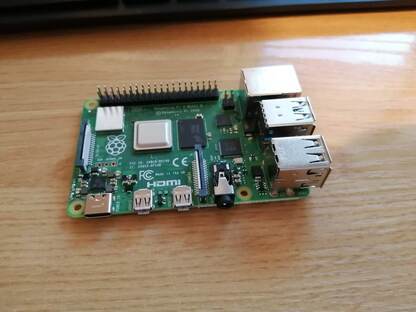Post updated 2021/01/23 Two new computers added to the benchmark.
I've bought my second Raspberry Pi (a 4 model, with 8Gb of RAM). I'm still using the first one at home, and the only problem is that it is a bit slow. Having read about the new model and since I have and old PC at my office (server experiments, testing, and so on...) I was wondering if this small computer could play a role substituting the old PC. Maybe we could also reduce carbon footprint, being switched on most of the time.
I've got a small speed test based on Performance Comparison - C++ / Java / Python / Ruby/ Jython / JRuby / Groovy
and here you have the numbers:
| Computer | Processor | Cores | RAM | BogoMIPS | Own test |
|---|---|---|---|---|---|
| Old Desktop Computer | Intel(R) Core(TM) i5 CPU 650 @ 3.20GHz | 4 cores | 4Gb | 6384.84. | 81.19165420532227 microseconds. |
| Old Raspberry Pi | Raspberry Pi Model B Rev 2 | Single processor | 4 Gb | 697.95. | 6140.841913223267 microseconds |
| New Raspberry Pi | Raspberry Pi 4 Model B Rev 1.4. ARMv7 Processor rev 3 (v7l) | 4 cores | 8Gb | 126.00 | 220.48051118850708 microseconds. |
| Mobile Phone (Added: 2021-01-23) | HUAWEI P Smart 2019. HiSilicon Kirin 710 | 8 cores | 3 Gb | Unknown | 202.6593565940857 microseconds |
| Desktop Computer (2020) - (Added: 2021-01-23) | Intel(R) Core(TM) i5-9500 CPU @ 3.00GHz | 6 cores | 16 Gb | 6000.0 | 35.82597017288208 microseconds |
So, we can expect a performance near to the old PC, and sometimes we will take advantage of the fact that we have 4 cores and more RAM.
My main problem was that I bought the raspi, the power source, the SD card and some cooling kit but I did not pay attention to the fact that if I want to connect the machine to a screen the HDMI it has is a microHDMI one.
Fortunately, a quick search helped me to find this post: How to setup a Raspberry Pi without a monitor or a keyboard that is perfect for me, since I'm not planning to attach any screen to my raspi.
The trick?
All you need to do is create an empty file called “SSH” and place it in the root partition of the SD card.
So far, so good. The Pi is running and I've made the first configuration steps:
- update & upgrade
- Install pyenv
- Install my (small) toolbox for typical activities in my systems.
- Install vim
Now we will start to port the services from the old PC (one instance of Errbot, backup of my email, ....) to the raspi. We'll see.



Top comments (0)